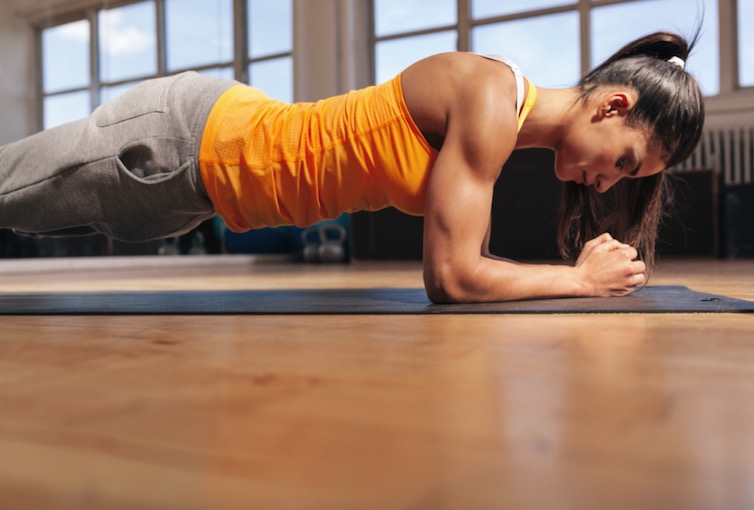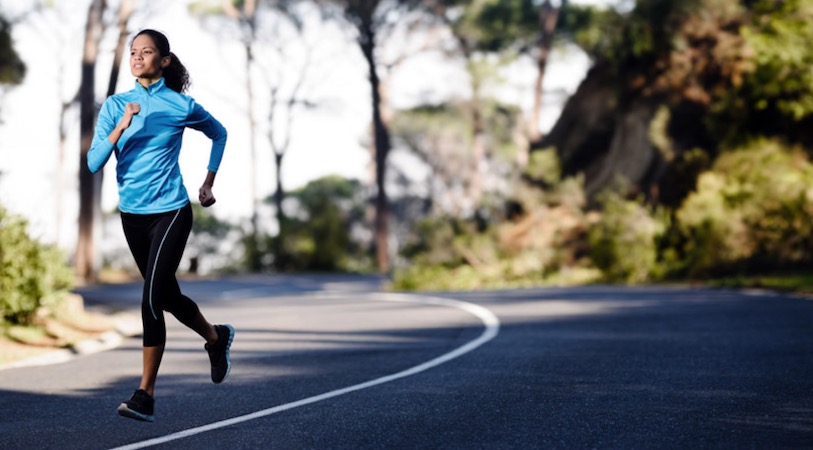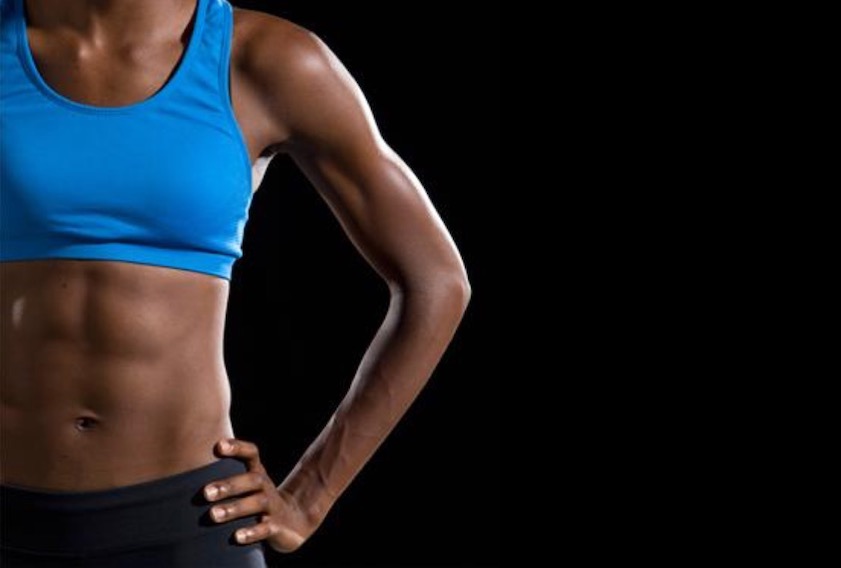Whether for weight management, sport, recreation, comradery or charity, running has become a favorite pastime of many people around the world. In fact, due to its utter convenience and outright affordability, running is second only to walking as the most popular form of cardiovascular (cardio) exercise with over 50 million runners in the United States alone.
In spite of its popularity, running is indeed a high-impact activity that needs to be approached in a strategic manner, as habitually doing so can place excessive stress and strain on the joints leading to overuse injuries and other musculoskeletal problems. This holds particular true among individuals with underlying joint disorders or those who are new to running.
Still, if running is your preferred activity, as it is for millions of others including myself, here are five effective strategies for preventing these dreaded consequences.
Related Article: 3 Low-Impact Cardio Alternatives to Running
Invest in Quality Shoes That Match Your Foot Type
Wearing the wrong types of running shoes can lead to unnecessary injury by placing undue stress on the joints and surrounding muscles. As such, it’s important to select shoes that are appropriate for your foot type. Feet are generally classified by one of three types: neutrally aligned (normal), pes cavus (raised or high arches), or pes planus (fallen arches or flat feet). People with neutrally aligned feet tend to run with natural “pronation”.
Pronation occurs when body weight is properly transferred from the heels to the forefoot causing the foot to roll inwards. Runners with pes cavus have a tendency to “underpronate” which essentially means that all their weight is supported on the outer edges of the feet. Symptoms of underpronation can manifest themselves as aches and sharp pains in the area of the foot between the toes and ankles.
If you have pes cavus, it’s important to choose shoes that offer superior arch support with just enough give to encourage natural foot flexion during running.
Pes planus is essentially the opposite of pes cavus, as it is characterized by excessive pronation (“overpronation”). Extreme overpronation during running can adversely affect the body’s overall alignment, largely due to its negative impact on the knee joint. In fact, “Runner’s Knee” (pain around the knee cap) is the most common overuse injury among runners with flat feet.
If your feet are naturally flat, opt for running shoes with a firm, thick heel counter for adequate support in this area. It’s also important that the sole underneath the arch of the foot is rigid yet somewhat flexible with adequate cushioning.
Regardless of your foot type, it’s important to replace your shoes after 300-400 miles of running for maximal protection against joint injury. Individuals with pes cavus will notice the first signs of wear on the outer edges of running shoes while those with pes planus (and oftentimes neutrally aligned feet) will display uneven wearing on shoes.
Incorporate a Dynamic Warm-Up Prior to Running
The best warm-up to perform before a run is one that involves dynamic range of motion exercises specifically targeting your lower body muscle groups (glutes, hamstrings, quadriceps, and calves). Such a warm up could include a combination of slow jogging/brisk walking, calisthenics and/or dynamic stretches lasting for 10-15 minutes.
When it comes to dynamic stretching movements you can perform toe and heel walks to warm up the calves in addition to forward, reverse and lateral (side-to-side) walking lunges for the glutes, hamstrings, and quadriceps. Other effective options include alternating groiners, Frankensteins, and hip swings.
As implied by their name “groiners” serve to warm up the muscles of the groin (between the abdomen and the thighs), which are especially vulnerable to overuse injuries (pulls or strains) among runners. To perform groiners, simply jump to a lunge from a pushup position while keeping your body in a straight line from your heels to your head on the floor.
To perform Frankensteins, stand tall with your feet about shoulder-width apart, step forward with your left foot and then kick your right leg in the air as high as possible while keeping it straight. When your leg is at its highest point, reach forward with your left hand to meet your right foot and then repeat the sequence with your left foot and right hand. You can then perform hip swings by still standing tall but holding on to a stable surface so that you can continuously swing one leg back and forth as high as you comfortably can.
For a good warm-up before a long run, perform each of the above dynamic stretching movements for 1-3 sets of 10-20 repetitions.
Maintain Efficiency in Running Form and Technique
Form and technique are arguably the most overlooked yet most important aspects of running-related injury prevention, especially amongst novice runners. So here I’ll run down the basics of both from top to bottom. First off, always hold your head up and look forward while running keeping your eyes focused on the path approximately 10-20 feet ahead of you, as this will help in maintaining proper posture, which is upright and erect with a neutral spinal alignment.
Your neck and shoulders should be relaxed and free of tension but it’s important not to slouch or slump over at the shoulders, as this can place undue strain on the lower back. Keep tabs on your posture by visualizing yourself squeezing your shoulder blades together and keeping your chest poked out.
As with your neck and shoulders, your arms should also be relaxed and free to swing back and forth as you run. However, ensure that your arm swings originate at the level of your shoulders as opposed to your elbows, which can easily be done by maintaining 90-degree angles of bend at the elbows. In this position your hands should be at the level of your waist and also very relaxed.
I recommend maintaining a slighted closed but unclenched fist, as clenching can lead to unnecessary tension in the arms, shoulders, and neck. Personally, I prefer to keep my thumbs up during running with the goal of keeping my spine in line with my thumbs. It’s a little trick that’s always worked for me.
When it comes to lower body running mechanics, the key is to incorporate techniques that are efficient and low-impact. To make this an easy process, maintain a gentle stride that’s light on the legs and easy on the feet. During foot contact, make an effort to land on the middle of your foot (midfoot) and then roll forward and inward for a push off toward the front of the foot, near the toes (forefoot).
You should also stay low to the ground while running and refrain from excessive bouncing in order to preserve energy and lessen impact. To build speed, keep your stride length short focusing instead on faster turnover, as this reduces overall stress and strain on the joints thereby lowering the risk of injury.
Related Article: Beginner’s Tips for Running a 5K
Include a Sensible Stretching Routine After Running
There is a popular belief that stretching prior to running is important for injury prevention and muscle recovery. Let me first clarify that stretching is generally beneficial for maintaining normal joint range of motion and overall flexibility, which supports efficient, symmetrical form and technique during running. But, unbeknownst to many, stretching before running can actually impair muscular performance for up to 30 minutes.
This is especially true for those long, drawn-out, static stretching routines. While such stretching has its place in reducing running-related injuries associated with improper form and technique, it is best performed after running when all the muscles are nice and warm.
In this light, your routine should consist of 12-15 minutes of static sustained stretching comprised of exercises targeting the major lower body muscle groups.
For your hamstrings, perform the sit-and-reach and then stretch your calf muscles with a heel drop, which is performed simply by placing your toes on the edge of a stair and lowering your heel toward the floor. When it comes to your quadriceps, stand on one leg while pulling the ankle of your opposite leg towards your glutes until you feel a stretch in the front of your thigh.
To stretch the deep hip flexors, which are often tight amongst runners, move into a lunge position with one of your knees in contact with the floor and then shift your weight forward until you feel a stretch of mild discomfort. To stretch your glutes, cross one of your legs on top of the other while gently pulling the opposite knee towards your chest.
For maximum results, hold each stretch for at least 30 seconds and then repeat the total sequence of stretches about 4-5 times. Stretching this way will help to ease muscle tension and immediate feelings of muscle soreness after a run.
Establish a Targeted Resistance Training Routine
Low levels of muscular strength and endurance are silent culprits in the onset of running-related musculoskeletal injuries, primarily because so many runners don’t lift weights or incorporate any type of resistance training routine. Not only does resistance training enhance strength and endurance for injury reduction but it also promotes proper posture, balance and joint stability in ways that reduce the overall energy cost of running.
If you regularly follow my blogs, articles and tips, you’ll notice a bias towards this type of training. I’m biased for a reason. It’s highly effective.
In fact, I’ve been an avid runner for years without so much as a minor shin splint and I wholeheartedly attribute this to resistance training. With that said, to enhance your muscular strength and endurance for maximum injury risk reduction there are six exercises that you most certainly will need to include in your routine (click the links to see a full description and video clip for each exercise):
When it comes to improving running performance and lowering injury risk, executing these exercises with low loads and a relatively high number of repetitions (12-20) is ideal. However, it’s important to understand that lifting with low loads doesn’t mean that your workouts should be ‘easy’.
In order to achieve the best results, the amount of weight you lift should fatigue your muscles within your planned number of repetitions. For example, if you plan to perform 20 repetitions, your muscles should start to fatigue somewhere between 18 and 20. In other words, 18 should feel like you can’t make it to 20 but light enough for you to get there. It’s also important to incorporate upper body exercises so that your resistance training program is well-balanced.
Related Article: Weight Training 101-What You Need To Know Before You Lift
There is no doubt that running is one of the most appealing options for physical activity, as it is approachable, affordable, and accessible to virtually anyone. Still, running isn’t necessarily the best form of activity for those with muscle, bone or joint-related medical conditions of any sort. However, if running remains your forte, and you’re physically conditioned to do so, following these five highly effective tips will surely keep you injury-free and on your feet for many years to come.







